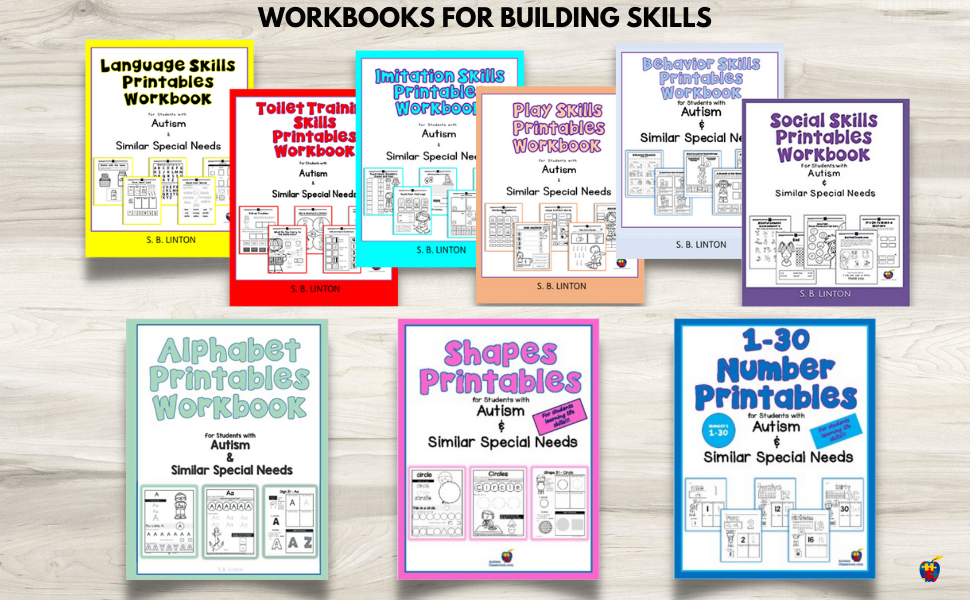 Having a child with developmental delays is an unplanned journey. However, many parents, grandparents, and other family members still find themselves on that road. But what is the best way to find joy in that journey? To make the best of each day? To really stop and see each child for who they are?
Having a child with developmental delays is an unplanned journey. However, many parents, grandparents, and other family members still find themselves on that road. But what is the best way to find joy in that journey? To make the best of each day? To really stop and see each child for who they are?
For sure every parent wants to help their child be responsive and comfortable, especially when interacting with their environment. There is a sense of pride that comes with being able to help your child grow.
Despite the developmental delay a child may possess, their unique personality always shines through. It is in the uniqueness of each child where the joy, fun and acceptance can be found. But first, there needs to be a focus on strengths. There is enough in the world to remind us all about our weaknesses and deficits. And there is a time to address those areas to engage in improvement, but we must not live there. We can shift focus from time to time to focus on strengths.
Understanding the strengths of your child would serve as leverage when engaging with them. Your child might like to hum, draw or write, listen to music, watch TV, etc.
Learning more about your child is an essential step in unleashing their potential. Some activities to provide fun, learning opportunities are below.
Appeal to Their Musical Side
For instance, if your child has a soft spot for music, engage your child by composing songs that help them learn new things easier. For example, composing songs on numbers, multiplication tables, the basic alphabet, and even spellings of words they use every day. Think phone number memorization meets the tune of a favorite song. Depending on your age, remember how easy it was for you to remember 867-5309. (Try saying that without extending that niniiiiiiiyinee!) So, make up some songs and see whose ears perk up, head leans a little closer and voice starts humming along.
Use Workbooks That Teach and Engage
Another great activity for children is using workbooks. If nothing else, the workbooks can be a roadmap of what type of skills to work on. Try using the workbooks as a guide for you as your child’s education facilitator. If your child cannot yet do exactly what is in the book, think of ways to modify the skill and bring it out of the book. For example, if the skill in the book is matching sets of socks on the paper. If you child is not ready for the written part, just grab 3 pairs of socks from a drawer and have them match the actual object in-person. Same skill of matching, just in a way that they can do it!
Autism Classroom specializes in workbooks for children with developmental delays. These workbooks help them show what they know without a large need for handwriting skills. A lot of the answers are done through cut and paste, circling, matching etc. The workbooks focus on teaching imitation, play, language, toilet training, personal/life/home skills, social and behavior skills. (Click to see more about the workbooks.)
Play with your Food
Think about engaging children in activities that are fun for them. These include learning numbers with food, by counting out the snack before eating it. Or, asking how many chips do you want as you hold up a card (or have it on the table) with several numbers on it. After they chose a number, you provide that many chips. “Okay you picked 4…1, 2,3,4.”
Casually See the Shapes in the World
Making shapes with different objects is fun for many kids. Playdough is not a constant seller for nothing. But now, there are so many tactile slimes and sands that kids like to use to create things. Many of them can be used to sneak in some lessons on shapes. Try a casual play time with their favorite messy substance and just “drop-in” some discussion about what shape you are making like, “Look, I made a triangle with mine.”
Having it be casual will be less likely to ring any alarm bells that signal this is a learning experience. So if you are using the play approach, be very careful not to turn it into a drilling session where you start making demands like “Make a circle, make a square.” Save that type of talk for a true work time session.
Speaking of shapes, don’t forget the power of a snack made of different shapes. Just about every snack food I can think of has a shape that can be emphasized each time that snack is given. Cookies tend to be circles most times, crackers can be square or circle…I think you see where I am going.

Keep It Fun, But Add the Lesson
By converting your child's favorite activity to a low-key learning opportunity, you can build their skills without taking away the fun. For instance, while playing with different balls, parents can ask their child the color of the ball or the number of balls you have thrown to them. This method helps to successfully evaluate their understanding of colors, numbers, and retention.
Take a Picture Walk Through a Photo Album
This can be a fun way to teach family history, learn names and create conversation. Try setting a timer and sitting together to view a photo album.
Use Pictures to Jump Start Understanding
Visual supports help all children understand written words better. They help children with developmental delays as well. Use pictures and picture cues to help with routine activities that your child may be having trouble remembering. Create (with photos) or buy some picture cards for daily routines. Teach them what the pictures mean and walk them through each step. As time goes on, expect them to do some of the steps on their own. This can be done by pausing before offering help. This will give them time to process the picture and think about what to do on their own.
Keep the Joy
No matter the technique used to help your child with developmental delays, remember to focus on the strengths. They will appreciate that you do take the time to stop and see them for who they are.


